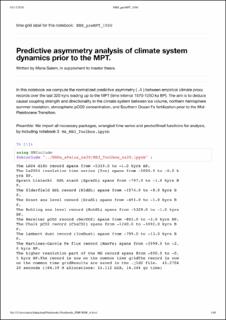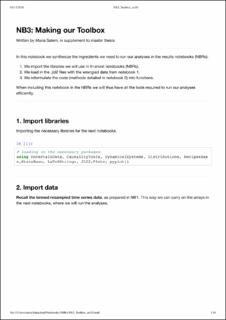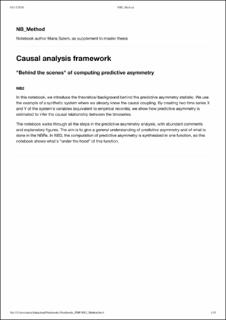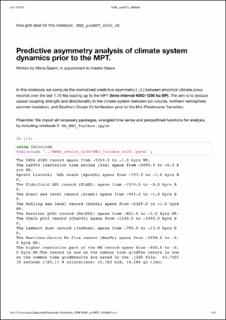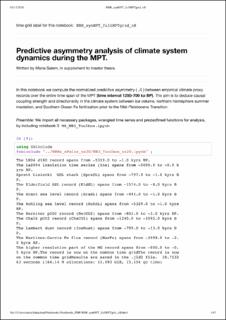| dc.description.abstract | Many different mechanisms have been proposed to explain the change in glacial intensity and duration that occurred during the Mid-Pleistocene Transition (MPT), 1250-700 thousand years ago. Despite a growing volume of paleoclimate archives and advances in climate modeling, however, there is no consensus on what caused the MPT. In this thesis I take state-of-the-art paleoclimate records as a starting point, and address the following questions: (1) According to the observed data, what were the main causal interactions among key climate system components in the Pleistocene? (2) Did the strength or directionality of these interactions change across the MPT? I use available time series of atmospheric CO2 concentration and Northern Hemisphere summer insolation, as well as proxy records for global ice volume and Southern Hemisphere aeolian dust. To analyze causal connections, I use the Predictive Asymmetry method, a novel technique that combines concepts from dynamical systems theory and information theory to quantify causal coupling directly from observed time series without modeling the unknown mechanisms. My results show that there is empirical evidence in the paleoclimate records for causal connectivity among some of the key components of the Pleistocene climate system. Both atmospheric pCO2 and Southern Ocean dust flux were important factors influencing ice volume changes in the Late Pleistocene, with limited evidence of external forcing by insolation. Furthermore, dynamical information in the observed records indicate the some of the causal interactions in the climate system changed across the MPT. Specifically, forcing of ice volume changes by Southern Ocean dust appeared during the MPT and became prominent in the Late Pleistocene. These findings may help evaluate the competing hypotheses for explaining the MPT. This thesis is the first to make extensive use of Predictive Asymmetry on paleoclimate records, thus contributing valuable insights into the merits and limitations of this recently developed technique when studying the complex interconnectivity of the Earth System. | |

